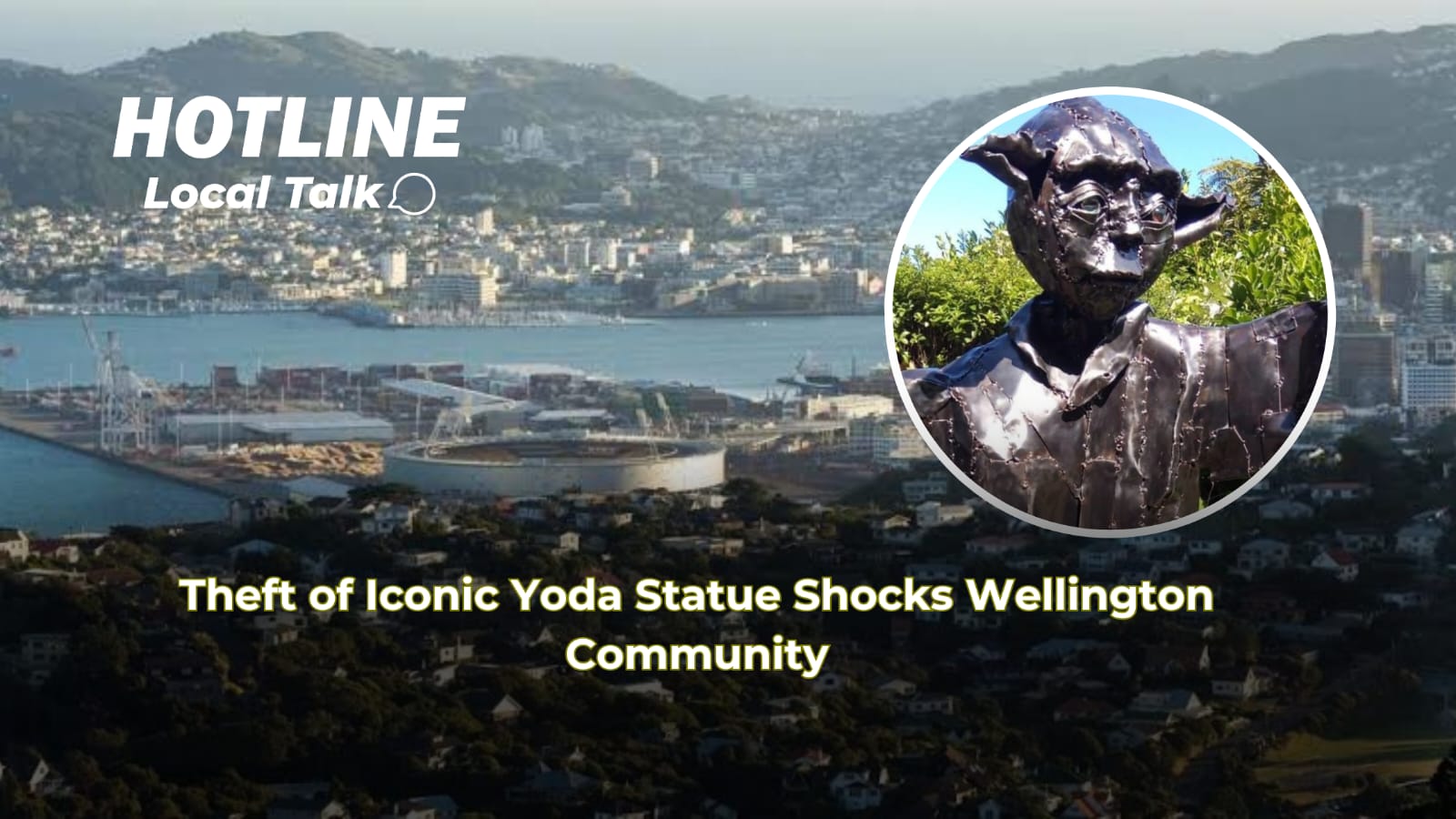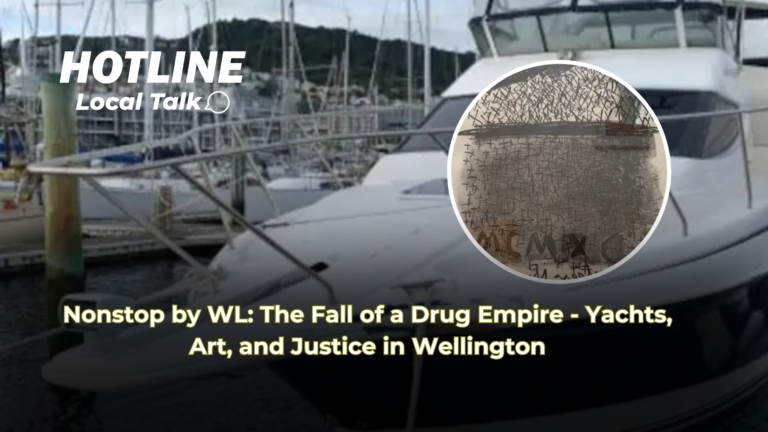Introduction: The Unveiling of Operation Superdry
In the bustling city of Wellington, a significant operation unfolded that would shake the foundations of local organised crime. Operation Superdry, initiated in 2019, was a meticulously planned police operation aimed at dismantling a drug-dealing syndicate led by Kenny Leslie McMillan. This operation not only led to the conviction of McMillan but also resulted in the seizure of his luxurious assets, including a 42-foot yacht and high-end art, symbolising the end of his illicit empire. This article, brought to you by One Network Wellington Live, delves deep into the intricacies of this operation, the legal proceedings, and the broader implications for crime and justice in New Zealand.
The Genesis of Operation Superdry
Operation Superdry was not a spur-of-the-moment decision but a response to growing concerns over the distribution of methamphetamine in Wellington. Methamphetamine, often referred to as ‘P’ in New Zealand, has been a scourge, with its use linked to increased crime rates, health issues, and social decay. According to the New Zealand Police, methamphetamine-related offences have seen a steady rise, with a 20% increase in convictions from 2018 to 2020. The operation targeted McMillan, who had established a sophisticated network for drug trafficking, sourcing meth from Auckland and cleverly transporting it to Wellington.
The Logistics of Drug Trafficking
McMillan’s operation was a testament to the lengths drug dealers go to evade law enforcement. Drugs were transported in vehicles equipped with secret compartments, a method that highlights the advanced tactics used by modern drug syndicates. These vehicles would travel from Auckland to Wellington, a journey of about 6-7 hours, with the drugs hidden in such a way that routine checks would likely miss them. Once in Wellington, the drugs were stored in inner-city parking buildings, a choice of location that provided anonymity and ease of access for transactions.
Statistics Insight: A study by the New Zealand Drug Foundation indicates that approximately 70% of methamphetamine in Wellington is sourced from Auckland, showcasing the regional dynamics of drug distribution.
The Downfall: Legal Proceedings and Convictions
McMillan’s initial plea of guilty to some charges was a strategic move, perhaps hoping to mitigate his sentence. However, his denial of other charges led to a jury trial where he was ultimately found guilty. In 2021, he was sentenced to 18 years in prison, a sentence reflecting the severity of his crimes and the impact on the community. Detective Sergeant Sam Buckley, who led the operation, commented on the significance of the High Court’s forfeiture orders issued on February 12, which included:
- Cash and bank accounts amounting to nearly $168,000
- Three motor vehicles
- A 42-foot Silverton 330 sport launch yacht
- Jewellery, including a Hubolt watch valued at $50,000
- A Ralph Hotere lithograph, a piece of high-end art
The total profit forfeiture order against McMillan was set at $2.758 million, encompassing the profits from his criminal activities. This order not only strips McMillan of his ill-gotten gains but also sets a precedent for future asset seizures.
The Role of Robert Jason Taui
Robert Jason Taui, another key figure in this operation, was convicted for his role in facilitating the drug exchanges. His sentence of nine years and one month, along with a forfeiture order of assets worth nearly $54,000, including cash, motorbikes, and vehicles, further illustrates the network’s depth. A profit forfeiture order of $1.38 million was also imposed on him, highlighting the financial scale of their operations.
The Impact of Asset Seizure
The seizure of assets like yachts and high-end art from drug dealers serves multiple purposes. Firstly, it disrupts the financial backbone of criminal operations, making it harder for them to continue or restart their activities. Secondly, it sends a strong message about the consequences of crime. Detective Sergeant Buckley emphasized that these assets were derived illicitly, allowing McMillan and Taui to live lifestyles far beyond what legitimate means could provide.
Legal Insight: According to the Criminal Proceeds (Recovery) Act 2009, New Zealand law allows for the seizure of assets that are proceeds of crime, aiming to remove the profit incentive from criminal activities.
The Broader Implications
The success of Operation Superdry and the subsequent asset seizures have broader implications for the fight against organised crime in New Zealand. It demonstrates the effectiveness of targeted operations and the use of financial investigations to dismantle criminal networks. Buckley noted that one of the primary motivations for organised crime is financial gain, and by removing this incentive, law enforcement can significantly impact the perception that crime pays.
Community and Public Reaction
The community’s reaction to such operations is often mixed but predominantly supportive. While some express concerns over privacy and the extent of police powers, the majority view these actions as necessary to curb the drug epidemic. Public forums and local news outlets have reported a sense of relief and justice among Wellington residents, with many hoping this would deter future criminal activities. Community leaders have praised the police for their efforts, emphasizing the need for continued vigilance and community involvement in reporting suspicious activities.
Statistics on Public Perception
A survey conducted by the Wellington City Council in 2022 showed that 85% of respondents felt safer knowing that significant drug operations were being dismantled, and 78% supported the seizure of assets from criminals as a deterrent.
Looking Forward: The Future of Crime Prevention in Wellington
With the conclusion of Operation Superdry, the focus now shifts to prevention and rehabilitation. The Wellington Police have announced plans to increase community outreach programs, focusing on education about the dangers of drugs, particularly methamphetamine, and providing support for addiction recovery. Additionally, there’s a push towards enhancing surveillance and intelligence operations to preemptively tackle drug trafficking before it escalates.
Innovative Approaches
Technological advancements are also being integrated into crime prevention strategies. For instance, the use of AI in traffic analysis to detect unusual patterns in vehicle movements could potentially identify drug transport methods like those used by McMillan. Furthermore, community policing initiatives are being strengthened, with officers engaging more directly with local businesses and residents to foster a collaborative environment against crime.
Conclusion: A Message of Deterrence and Hope
Operation Superdry, with its dramatic seizure of a yacht, high-end art, and substantial financial assets, marks a significant victory in the ongoing battle against drug trafficking in Wellington. It serves as a stark reminder that crime, especially of this magnitude, will not go unpunished, and the profits from such activities will be reclaimed by the state. For One Network Wellington Live, this story is not just about the fall of a drug dealer but about the resilience of law enforcement, the community’s role in supporting justice, and the hope for a safer, drug-free Wellington. As we continue to report on such matters, we remain committed to highlighting the efforts to keep our city vibrant, safe, and thriving.
CONTRIBUTE
Have stories, yarns, mad scoops, or community news to share. We often pay for awesome content and life shattering stories. What have you witnessed?








